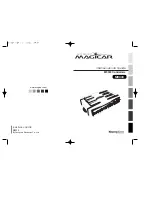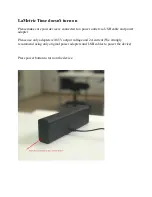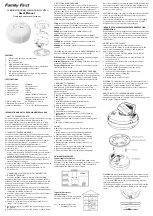
C-9102 (UL)
Conventional Photoelectric Smoke Detector
Installation and Operation Manual
Page 5
1) Field testing can be done by Trut300 Smoke Detector Sensitivity Tester of No Climb
Products Ltd. (for detailed description, please refer to Trutest Smoke Detector
Sensitivity Tester User Manual Issue2.1c) or similar smoke generating tools. If
Trut300 is used, adjust its obscuration to 1.7% /ft to 2.6% /ft according to the
manual, start testing until the detector alarms. If the tester shows “pass”, the
detector passes the test.
2) You can also use similar smoke generating tools (cigarette or smoke gun) and blow
the smoke at the smoke-in hole (Fig. 6) into the detector until it alarms.
Note: This test is only used for verifying the ability of the detector to alarm after smoke
enters. It cannot be used to test its sensitivity.
Fig. 6 Testing
4. After testing, reset the detector by power-cut over 5s. Notify the proper authorities
the system is back in operation.
5. If a detector fails in testing, clean it as described in "Maintenance" and test again. If
it still fails, please return it for repair.
VII Troubleshooting
In case of any fault, check connecting cables and fixing screws first, then open the
housing to see if there is loose soldering or blown parts.
Possible trouble and solution during operation are as follows:
1.
No alarm:
Check whether the detector is securely installed on the base. There should be DC24V
voltage on terminals No. 1 and 3 of the base, if not, check the cable with the FACP open
or not.
2.
Nuisance alarm:
Check the LED on the detector lit or not. If not, check the polarity of wiring and whether
there are short circuits on terminating resistor. If it's lit, check whether the chamber in
the detector is too dirty and needs to be cleaned. Otherwise, the circuit may be broken.
LED
Smoke in
Recess




























